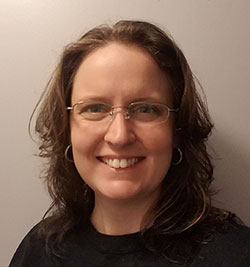 It’s natural to think that digital transformation begins with products. Not quite so for Conrad Industries. Having “outlived” most software advances, the 160-year-old custom manufacturer and distributor of embroidered items builds its legacy on innovating around its most valuable investment: its people.
It’s natural to think that digital transformation begins with products. Not quite so for Conrad Industries. Having “outlived” most software advances, the 160-year-old custom manufacturer and distributor of embroidered items builds its legacy on innovating around its most valuable investment: its people.
We recently sat down with Heather Johnson, compliance officer of Conrad Industries, to learn more about the challenges facing midsize manufacturers, its initiatives in modernizing operations, and how it empowers its workforce to redefine what digital transformation means to them.
Tell us about Conrad Industries. What is your role?
Conrad Industries, also known as A-B Emblem, is a family-owned custom manufacturer and distributor of embroidered emblems or patches. Conrad Industries has been in business for over 160 years, originating in Germany but has had its home in Weaverville, NC for a little over 50 years.
My current role here for the last three years has been Compliance Officer. I handle various responsibilities including compliance, auditing, Quality Management Systems support, process development, a citizen developer for our operational systems, and a citizen data scientist who handles our advanced reporting.
From your perspective, what are a few of the biggest challenges facing midsize manufacturers today?
From what I have experienced in our own facilities, some of the challenges are:
- Difficulty keeping up with technology (in terms of cost) in a very competitive arena. Established manufacturers may have older technology that can sometimes hinder their ability to stay competitive.
- As standards for sustainability, social compliance, and the like become more stringent and focus more on a global impact, the overhead and costs associated with maintaining those standards are very high. In most cases, so are the tools to manage them. This can put a strain on budgets and staff.
- The ability to adapt to digital changes quickly. In a case like Conrad – a company that has repeatedly outlived the software that has previously supported it – it can be extremely challenging to continuously develop and redevelop processes as the digital landscape changes.
Can you provide one or two examples of how you have been able to help Conrad ‘modernize’ some of its operational procedures, and what have been the results?
Our team utilizes a no-code/ low-code platform to digitize a large portion of our administrative processes. Some of these include quoting, digitizing our product specs, procurement, design team management, and developing an entire supplier portal. The improvements so far, have been incredible and have started allowing us to consider business growth opportunities we couldn’t before.
This has allowed us to streamline a significant amount of our processes and has helped us eliminate a lot of overhead due to a previous “faux” digital system.
In your view have you noticed any notable differences between new employees at Conrad versus long time staff regarding their expectations of IT?
People expect efficiency in software. When Conrad updated to computers years ago – the manual systems were pretty much copied and pasted into the new computer-based system. As technology has advanced, we pretty much had a paper-based system pretending to be digital. For our seasoned veterans – this is what had been done for years – so I don’t think the expectations were the same. For newer employees (including myself), I think we questioned why what appeared to be a digital system was still so clunky. The need for answers to problems, more efficiency, and the desire to get insights from data that we couldn’t tap into is part of what drove us to look for solutions.
What skills would you deem critical for other looking to have successful careers at companies like Conrad?
- The ability and willingness to continue learning and engaging as you grow into any role. I have such a respect for manufacturers; the art and craft that goes into what we do and the meaning behind the products we provide our customers. My original role did not lend itself to learn about the rest of the company. I could’ve stayed in my little hole and kept working. However, I think when an employee is willing to learn more about their company and what they do, whether it’s in manufacturing or any business, they’re able to buy into the vision. They become a functioning member who cares and are invested. You can’t be passionate about something you don’t bother to know about. It’s management’s job to cast vision; it’s the responsibility of the employee to engage and find their place within that vision.
- Quality of product and service starts internally with the quality of your interaction with your team. I would not have been able to have a part in our company’s successful digital transformation journey if I had not bothered to create quality relationships with my managers and co-workers. They wouldn’t have trusted me and trust is everything; no matter what level you sit in your organization. Trust is built from your integrity. When those are in place – you, your co-workers, managers, other stakeholders, and especially your customers, benefit.
- Speak up and ask questions. In a manufacturing company that is extremely process driven, it’s easy to get complacent and in the “that’s the way we’ve always done it” mentality. Just because a process isn’t “broken” doesn’t mean it can’t be improved upon. Once you have taken the time to learn, gain trust, and become invested – be courageous enough and care enough to ask questions and speak up. This is leadership in action. Leadership is not always synonymous with management. Asking questions challenges complacent thinking and speaking up with your own creative ideas demonstrates your engagement. Be willing to ask and talk about even the hard things honestly and respectfully.
